Pothos Root Rot - Cause And Treatment
Written by Ivy
Jan 13 2023
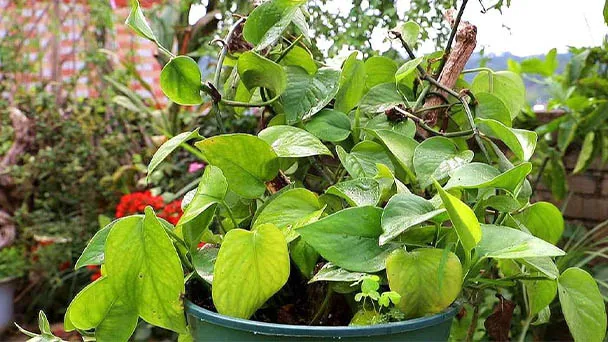
When taking care of Pothos, many people often dry the branches and leaves of Pothos. The main reason is that there is something wrong with the root system of Pothos. For example, Pothos root rot occurs when we water too much. Pothos root rot is the most common case. The leaves are black, rotten and dry. If this situation is found, how should we treat it?
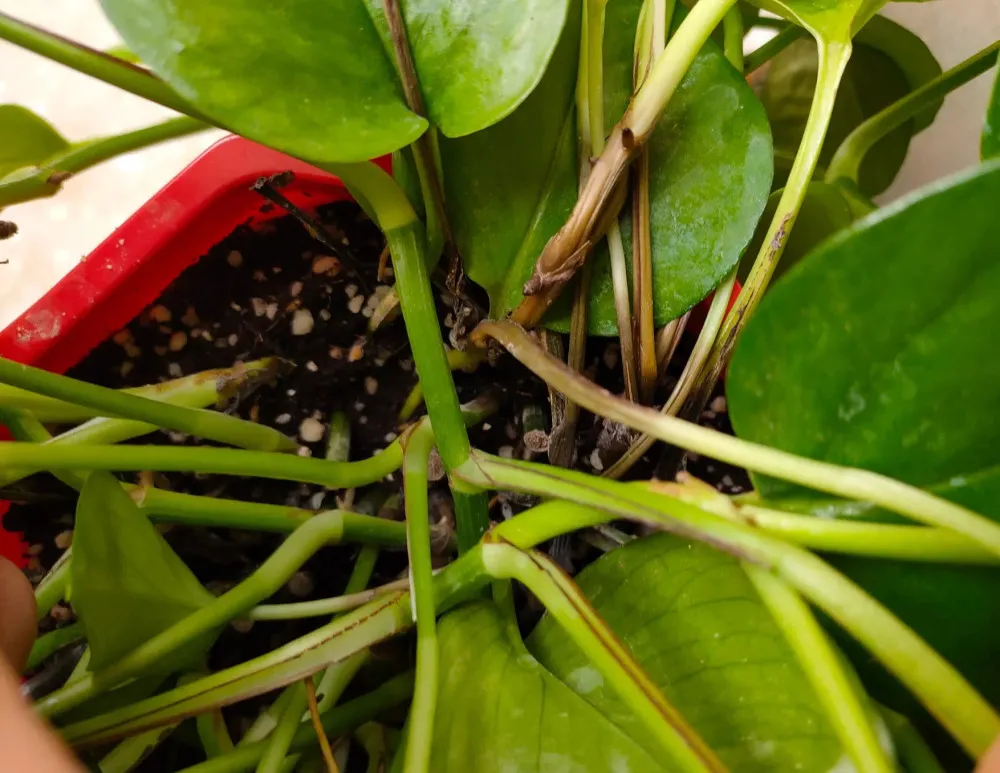
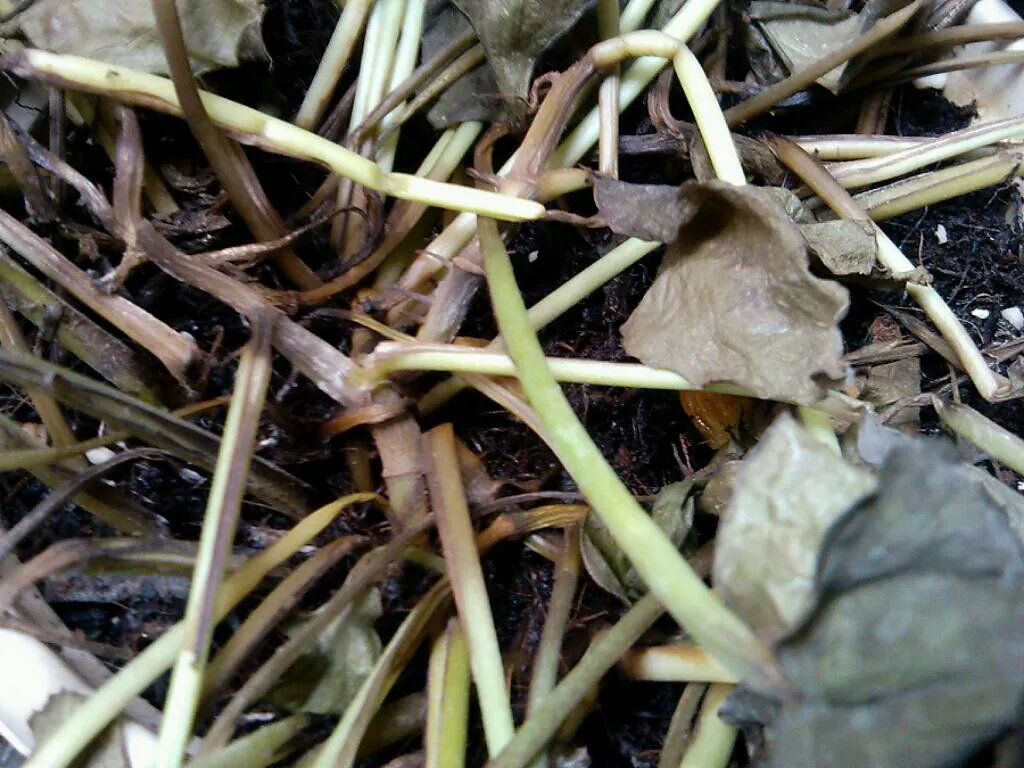
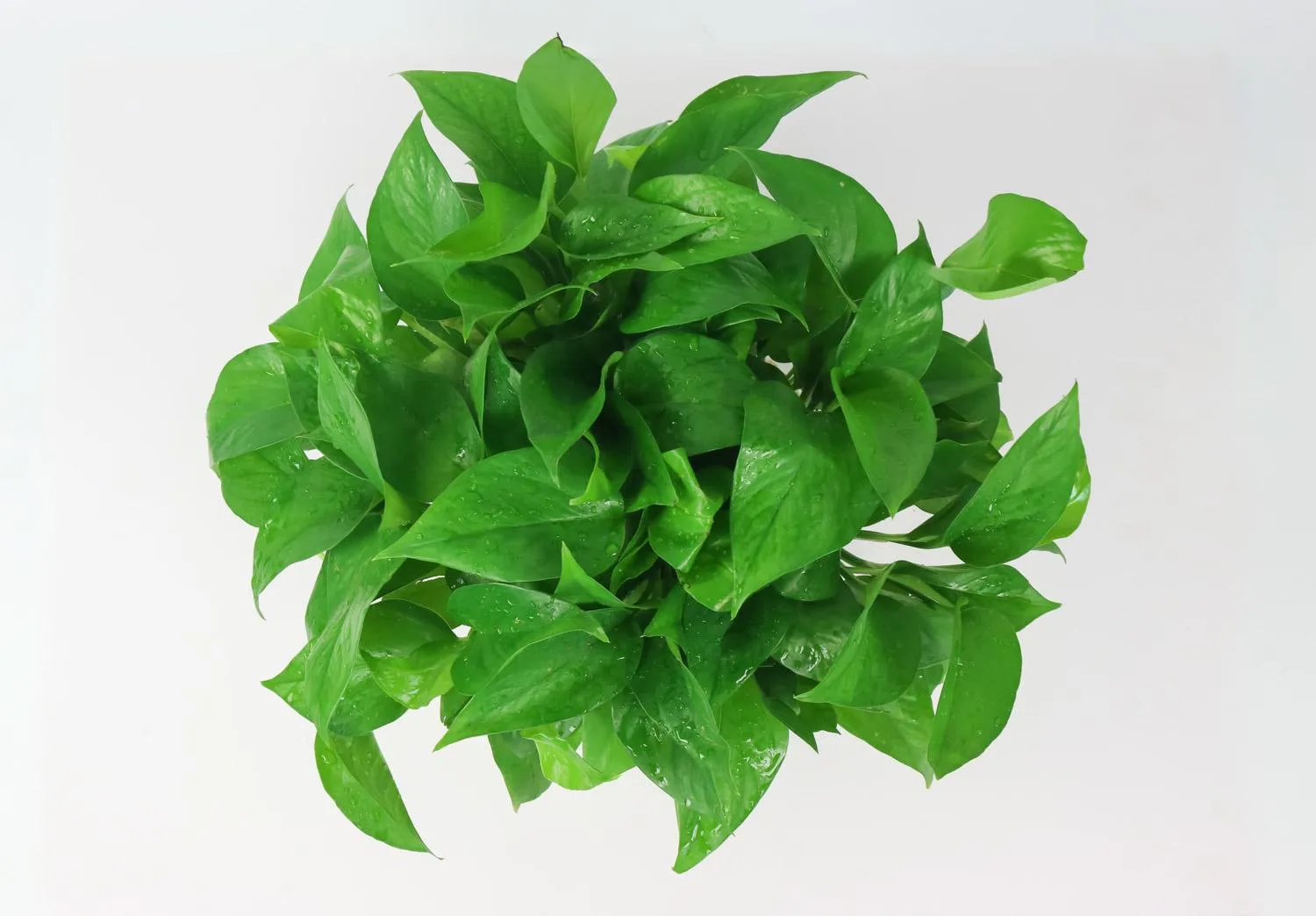
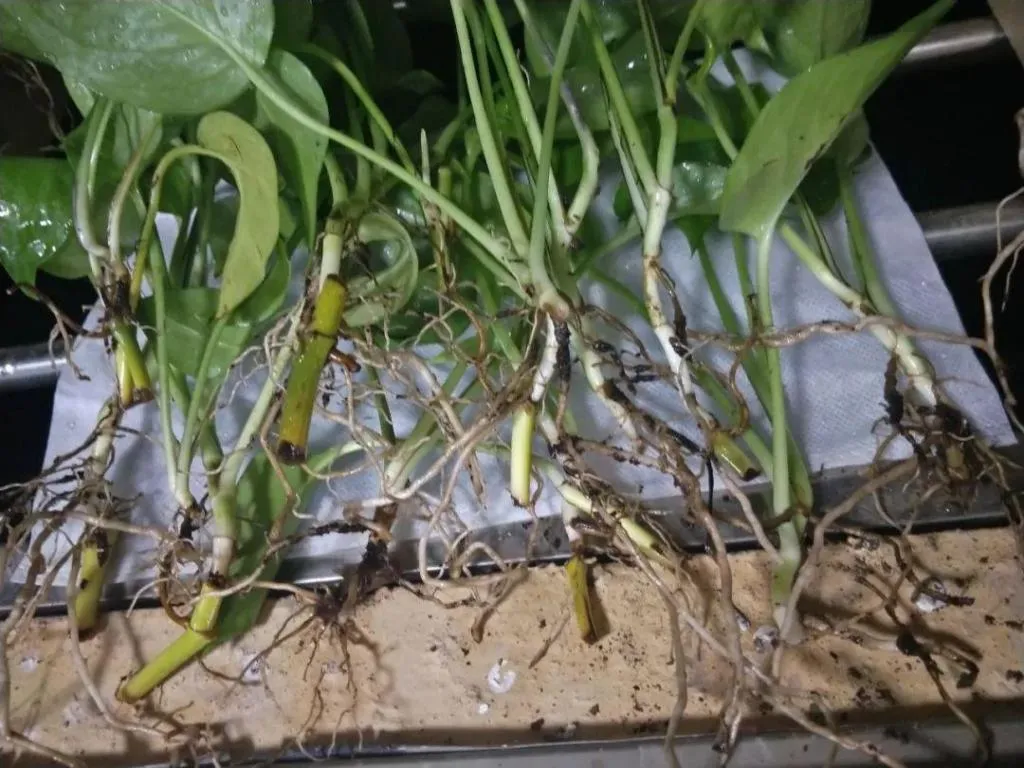
During the operation, it is inevitable to damage a small amount of upper root system. Don't worry too much, because if the upper root system is not seriously damaged, it will generally not affect the normal growth of Pothos. Moreover, properly cutting a small amount of upper layer is thinner, which is more conducive to Pothos germination of new roots and improve the growth vitality of Pothos.
After loosening the upper soil, hold the outer wall of the flowerpot with both hands and gently pat the outer wall of the flowerpot. Pay attention to uniform force until the surface soil in the flowerpot is relaxed and uniform. At the same time, by patting the outer wall of the flowerpot, a certain gap can be maintained between the basin soil and the inner wall of the basin.
In addition, the reason why Pothos always rots roots is that we water frequently for a long time, resulting in the soil being wet for a long time, which will lead to the root system unable to breathe normally, resulting in rotting roots.
Read More:
What Causes Pothos Root Rot?How to Identify Pothos Root Rot?Roots are turning black or decayingLeaves Turning Yellow/BrownWeird Smell Coming out of the RootsDampness of SoilFungus or Mold on SoilDelayed GrowthHow to Save Pothos from Root RotChoose a Clean SubstrateCut off the Mushy, Rotting RootsChange Basin and SoilHow to Prevent and Control Pothos Root Rot?Loosen the SoilTreat the Soil with FungicideDo Not OverfertilizeFAQsCan Pothos Plant with no Healthy Roots be Saved? Why does My Pothos Plant Keep on Getting Root Rot?
What Causes Pothos Root Rot?

- Overwatering
- Inappropriate soil
- Poor drainage system
- Pathogenic infections
- Over-fertilization
- Non-porous pots
- Inappropriate temperature
- Poor ventilation
- Dormant seasonal care
- Contaminated tools
- Using contaminated soil
- Buying sick plants
- Stress in plants
How to Identify Pothos Root Rot?

Roots are turning black or decaying
If the roots and stems turn black and the leaves wilt in the hydroponic Pothos, it is mainly considered that the water is not changed in time and the hydroponic container is cleaned, resulting in excessive reproduction of microorganisms in the hydroponic water and Pothos rotten roots. Hydroponic plants should not be exposed to sunlight for a long time, which will not only burn leaves, but also lead to excessive breeding of green algae in hydroponic water. The addition of nutrient solution to hydroponic Pothos should not be excessive. Excessive addition of nutrient solution will lead to fertilizer damage and root injury. For hydroponic Pothos with blackened rhizomes and curly leaves, we need to timely select the branches with air roots, trim the rotten roots, soak carbendazim or mancozeb solution for sterilization, and then continue to be used in hydroponic culture. (Read More: Why Are My Pothos Leaves Curling)Leaves Turning Yellow/Brown
The ventilation effect of indoorcaring Pothos is very poor. After watering, the soil does not dry for a long time. Pothos roots soak in an environment mixed with soil and water for a long time, so the root system will have Pothos capillary root rot, and Pothos leaves turning yellow / Brown will gradually appear, which is the most common and the most serious problem.Weird Smell Coming out of the Roots
During the maintenance of Pothos, the root cannot be soaked in water for a long time, so the root cannot breathe and is not conducive to growth. Over time, the root of Pothos will rot due to lack of oxygen. In addition, due to the hot weather and untimely treatment, there will be weird smile coming out of the roots. It is estimated that there are all kinds of small insects in the basin.Dampness of Soil
As long as Pothos is not newly planted and grows healthily, the root growth state of Pothos can directly reflect the dryness and wetness of basin soil. If the pot soil is wet, Pothos leaves look very energetic. Even when the light is strong, the leaves droop a little. When the light is weak, they will soon return to normal and become upright. If Pothos basin soil is relatively dry, the leaves look listless. When the light is strong, the leaves wilt seriously, or even dry directly, and the light is weakened, it still can not return to normal. Therefore, in the process of maintaining Pothos, we should observe the changes of leaves.Fungus or Mold on Soil
Generally speaking, fungus or mold on soil is pothos root rot caused by lack of ventilation in a water rich environment. At this time, we'd better take off the basin and check whether the root system is rotten. If necessary, trim it, soak carbendazim, and then use a new soil basin.
Delayed Growth
If we often water Pothos and the pot soil is too wet, it will rot roots. The primary cause of Pothos rotten root is the lack of oxygen in the root, which is manifested in the yellow and small new leaves on the leaves, which will lead to the slow growth of Pothos.How to Save Pothos from Root Rot
Choose a Clean Substrate
Although Pothos has fast root growth and low environmental requirements, it is necessary to prepare clean matrix. We can prepare clean humus soil, perlite, coconut bran, river sand and organic fertilizer, mix them in the ratio of 2:1:1:1, sprinkle a small amount of organic fertilizer, mix and stir, put the soil in the sun, and then stir some carbendazim powder, Such soil is clean, loose and fertile.Cut off the Mushy, Rotting Roots
After we found the rotten roots of Pothos, the first step is to trim them first. After taking the plant out of the basin, first wash the soil at the root with water to better observe the root damage of save Pothos, and secondly wash away the bacteria or fertilizer in the soil. Cut off the Pothos rotten part of the root with sterilized scissors. Be careful not to hurt by mistake when trimming. After cutting, save Pothos can be soaked in carbendazim to avoid cutting infection.Change Basin and Soil
After pruning the Pothos root rot, we will change pots, soil and replant. Because the original basin soil may contain bacteria or other bad components, replace the new basin soil to reduce the possibility of rotten root recurrence. Do not mix base fertilizer into the soil, and disinfect it before use.How to Prevent and Control Pothos Root Rot?

Loosen the Soil
We can use a small bamboo stick and shovel to pry the soil along the edge of the inner wall of the flowerpot. The depth of inserting the bamboo stick should just see the uppermost root system of the Pothos, but do not damage or break the root system in a large amount.During the operation, it is inevitable to damage a small amount of upper root system. Don't worry too much, because if the upper root system is not seriously damaged, it will generally not affect the normal growth of Pothos. Moreover, properly cutting a small amount of upper layer is thinner, which is more conducive to Pothos germination of new roots and improve the growth vitality of Pothos.
After loosening the upper soil, hold the outer wall of the flowerpot with both hands and gently pat the outer wall of the flowerpot. Pay attention to uniform force until the surface soil in the flowerpot is relaxed and uniform. At the same time, by patting the outer wall of the flowerpot, a certain gap can be maintained between the basin soil and the inner wall of the basin.
Treat the Soil with Fungicide
We can use special fungicide to dilute with water according to the instructions, and soak the trimmed Pothos roots in the solution for about 30 minutes to clean the bacteria. After disinfection, Pothos can be restored to health immediately after replanting potted plants.Do Not Overfertilize
In winter, due to the low temperature weather and the limitation of its metabolism, Pothos will enter the stage of growth retardation. Therefore, we need to reduce the frequency of topdressing, and water-soluble fertilizer once a month is enough. And the concentration shall not exceed 0.02%. It needs to be poured slowly around Pothos basin. Do not pour water at the Pothos Root, otherwise there will be the symptom of accumulated fertilizer ponding and Pothos root rot and burning.FAQs
Can Pothos Plant with no Healthy Roots be Saved?
If we find that the roots of Pothos are rotten, don't think it can't be saved and throw Pothos away. It's really a pity. We first cut off the rotten part of the root with sterilized scissors, and pay attention to cutting it thoroughly, so that it will not wither again. After cutting the root, we can put Pothos in potassium permanganate solution for disinfection, and then put the sterilized Pothos in the soil for replanting. We can get healthy Pothos by watering and fertilizing regularly.Why does My Pothos Plant Keep on Getting Root Rot?
Pothos is always rotten. The big reason is the water quality. Tap water contains a lot of anti-virus chlorine. Pothos will rot if it is used directly without drying. It is best to use tap water after several days of storage, or tap water after exposure. As for air, many people tend to add too much water in the container when hydroponicing Pothos. Too much water affects the normal respiration of green pineapple roots. The correct way to add water is to add two-thirds of the container, leaving part of the space for root respiration.In addition, the reason why Pothos always rots roots is that we water frequently for a long time, resulting in the soil being wet for a long time, which will lead to the root system unable to breathe normally, resulting in rotting roots.
Read More:
- Why Are My Pothos Leaves Turning Yellow
- How To Fix Overwatered Pothos
- Snow Queen Pothos VS Marble Queen Pothos
- How To Grow And Care For Manjula Pothos
- Hawaiian Pothos VS Golden Pothos
- Epipremnum Aureum (Golden Pothos) Grow and Care
- How to Grow and Care for Scindapsus Pictus
- Cebu Blue Pothos Care & Propagation
- Glacier Pothos Care & Propagation Guide
- Silver Satin Pothos Care & Propagation
- Pearls and Jade Pothos Care & Propagation
- Neon Pothos Plant Care Guide
Latest Updated
- Benefits of Bugleweed - 7 Science-backed Health Benefits
- Bugleweed Dangers & Side Effects - Is It Poisonous?
- How to Plant Evergreen Trees - What You Should Know
- When to Plant Evergreens - Grow Guide for Evergreen Trees
- 12 Wonderful Evergreen Shrubs for Your Garden
- 12 Popular Evergreen Plants with Pictures for Beginners
- When And How To Prune A Lilac Bush Like a Pro
- How to Grow & Care for Lilac Vine (Hardenbergia Violacea)
- Japanese Lilac Tree (Syringa Reticulata) Care & Propagation Guide
- Shumard Oak Pros and Cons - What to Know
Popular Articles
- Winter maintenance of Antirrhinum Majus
- How to Grow Terminalia Mantaly Tree
- How to Grow and Care for Crossostephium Chinense
- How to grow Antirrhinum Majus in spring
- Peristeria Elata (Dove Orchid) Profile: Info & Care Guide
- Underwatered Snake Plant (Sansevieria Trifasciata) - Signs And How To Fix
- How to Care for Brazilian Jasmine Plant (Mandevilla Sanderi)
- How to Grow & Care for Graptopetalum Purple Delight in Summer
- Rosa Chinensis (China Rose): Plant Growing & Care Tips
- How to Care for Baby Sun Rose (Aptenia Cordifolia)